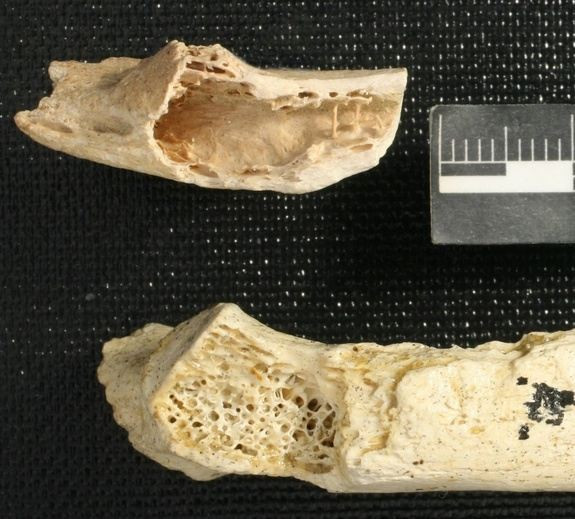World’s Oldest Cancer Found in Bone of 120,000 Year-Old Neanderthal

The world's oldest known human tumour has been found in the rib bone of a Neanderthal who lived more than 120,000 years ago.
The bone was evacuated from a site in Krapina, Croatia more than 100 years ago and has been found to have contracted the fibrous dysplasia tumour, a cancer which is common among modern-day humans.
This discovery by David Frayer from the University of Kansas predates previous evidence of the tumour by more than 100,000 years.
Before this discovery, the earliest bone tumour was seen in an Egyptian mummy around 2,000 years ago.
David Frayer, professor of anthropology at the University of Kansas, said: "It's evidence that Neanderthals suffered tumours - that they were susceptible to the same kinds of diseases that we see in modern humans.
"This is 100,000 years older than the previous tumour that has been found. There is no evidence of cancer older than this in the human fossil record."

Researchers said it is rare to discover evidence of cancer in the prehistoric population as they were not exposed to toxins, pollution, radiation and unhealthy diets over a long period of time which has been seen to cause cancer in today's humans.
Fibrous dysplasia in modern-day humans is the most frequent of the bone-tumours, but Frayer adds: "This case shows that Neanderthals, living in an unpolluted environment, were susceptible to the same kind of cancer as living humans."
When the bone with tumour was discovered between 1899 and1905 in a cave in Croatia, it wasn't associated with a complete skeleton. As a result researchers did not know if the tumour afflicted a male or female, the age of the individual at the time of death, nor if the tumour was the cause of death.
"It wasn't a small tumor," Frayer said. "It was a fairly large one, probably bulging at the base of the rib. We're not sure how far along it was, but it was well-expressed in the bone. It was in the upper third of the back, and muscles attach there that are associated with raising the arm."
The study, published in the journal PLOS ONE, concludes: "Given these factors, cases of neoplastic disease are rare in prehistoric human populations. Against this background, the identification of a more than 120,000-year-old Neanderthal rib with a bone tumour is surprising, and provides insights into the nature and history of the association of humans to neoplastic disease."
© Copyright IBTimes 2025. All rights reserved.






















